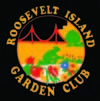Are you a part of the RI garden club? Are you planting non-native plants in your plot? Well let me tell you why you should plant natives in your garden. Pollinators are essential to our ecosystem. The pollinators--like beautiful butterflies and lovely ladybug--that are from here can only rely on native plants for food and nectar. Because of this, the butterflies and other pollinators may become endangered on our island and possibly extinct if we don’t start planting more natives on our beautiful island.
What is a native plant and why does it matter to our ecosystem?
A native plant is a plant that has been in the area for hundreds of years, evolving to co-exist with the other native plants and animals. This makes them necessary to our ecosystem, because the local animals can get more food and nectar from them as opposed to a non-native, or invasive plants. Now you might be thinking, “Well I see butterflies and bees on non-native plants, too!” While that may be true, native plants are much more helpful. According to the Audubon Society, the oak tree, native to North America, shelters and feeds about 500 species of native caterpillars, while the ginko, a tree indigenous to Asia, hosts only 5 species that live here. Therefore, the native tree, the oak, is one hundred times more useful to the environment than the non-native, the ginko.
Why are pollinators so important? What is pollination? What is a pollinator?
Pollinators are creatures that go from flower to flower drinking nectar and carrying pollen from plant to plant. This is essential because in order for the plant to reproduce, bugs and birds must pollinate plants. The way this works is the pollinators go to drink the nectar from the flower, and pollen from the anthers gets stuck on their bodies. When they drink nectar from another flower, the pollen rubs off on the sticky stamen which brings the pollen down to fertilize the plant. This makes it possible for fruit to develop and for seeds to be produced and planted. This is why pollinators are essential to our ecosystem, because without them the plants would not be able to produce seeds, making that plant go extinct. Also we would not have all the food we need like corn, tomatoes, squash, apples, peaches, and more.
Now, you may be thinking “But I don’t want bugs in my garden!” I have 3 things to say to you.
1. What about butterflies and hummingbirds? Those are pollinators and ones that most people would want in their garden.
2. Many of the beautiful flowers growing in your garden need to be pollinated in order for them to grow again next year.
3. One third of the crops we grow and eat are pollinated by insects. And guess what? If it weren’t for fly pollinators there would be no cacao beans, which means that there would be no chocolate!
If you’re thinking, “Well native plants are just too much work!” you are incorrect. Because natives have adapted to the local environment, they have also adapted to how much rain the area gets and the type of soil and other things like that. In fact, the Audubon Society says, “Because native plants are adapted to local environmental conditions, they require far less water, saving time, money, and perhaps the most valuable natural resource, water. In addition to providing vital habitat for birds, many other species of wildlife benefits as well.”
If you’re thinking, “Well all that stuff to find and buy it seems like a lot of work,” let me tell you; it’s not. It can be just like shopping for something online. You have a picture in your mind of what it will be, you find something you like, and you pay and order it!
In conclusion, we all should plant some native plants in our gardens because they are beautiful, they help the environment, and they attract native pollinators like monarch butterflies and ruby throated hummingbirds. I hope you decide to do this kind thing for yourself and the environment by planting natives in your plot.
National Wildlife Federation
Prairie Nursery
North American Native Plant Society
Are you a beginner gardener or an advanced gardener? What plants grow without a lot of help? Try spring violets, lupines, and amsonia, summer coneflowers, liatris, and phlox, fall goldenrod and asters.
If I were you I wouldn’t get too worried about how much care you have to put in but pay attention to what the plants need. Does it need to be in a dry and sunny place? Or does it like a shadier and moist home? Prairie Moon Nursery website (below) provides great information for all gardeners as well the Audubon Society for state specific native species information (https://www.audubon.org/native-plants.)
Where can you even buy plants or seeds?
Here is a list of nurseries where you can find all sorts of information & as well as make orders:
Greenbelt Native Plant Center https://www.nycgovparks.org/greening/greenbelt-native-plant-center
North Creek Nurseries https://www.northcreeknurseries.com/
Prairie Moon Nursery (great info on their website) https://www.prairiemoon.com/
Long Island Natives https://longislandnatives.com/t/butterfly-attractant
Want to learn more? See the articles below.
https://www.prairienursery.com/resources-and-guides/getting-started/
http://nanps.org/native-plants-to-know
 RSS Feed
RSS Feed
